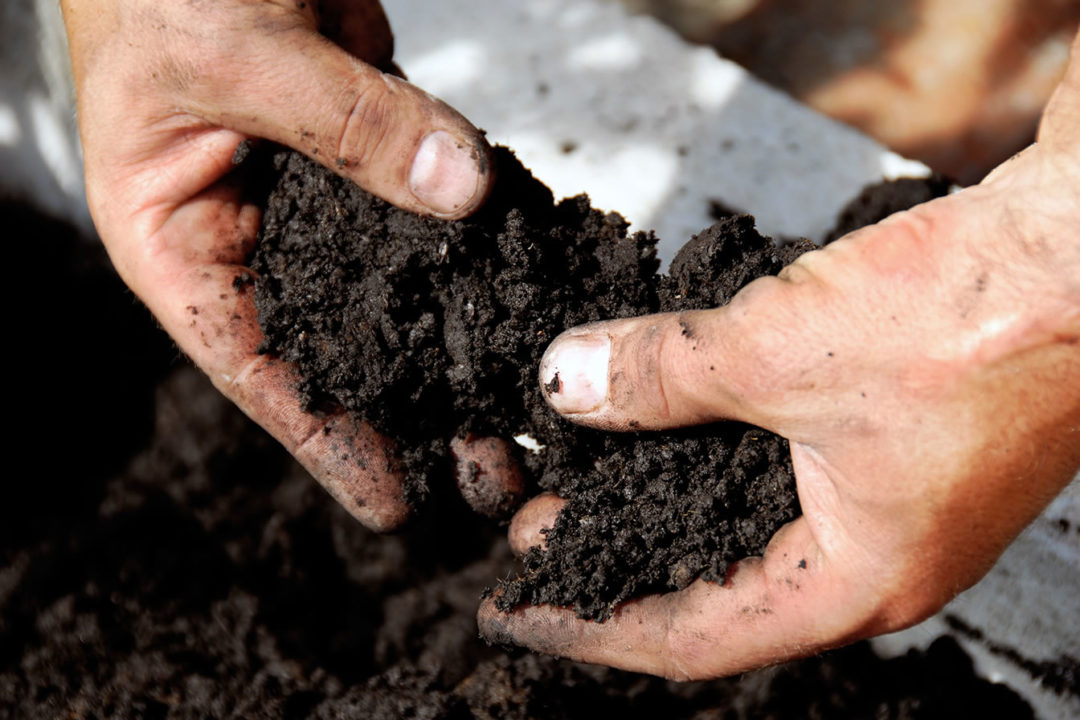
Sustainability Through Organic Agriculture

Soil is composed of organic matter, minerals, air and biodiversity to name a few things, making up the base of the food web, a complex ecosystem in which organisms interact in important ways, enriching the soil in the process. The Earth’s soil accounts for 80% of terrestrial carbon storage and acts as a natural filter for water. Unfortunately, most conventional farming practices deplete the soil, releasing excess carbon into the atmosphere when tilled and allowing nitrates from synthetic fertilizers as well as residue from herbicides and pesticides to seep into waterways.
Eutrophication of waterways can lead to dead zones. For example, when too much nitrogen accumulates in the water, algae grows in excess on the surface of the water, blocking the sun from reaching aquatic plants beneath the surface eventually causing death to fish and other aquatic life. Organic farming, however, uses manure and legumes to fertilize instead of dangerous synthetic fertilizers and practices crop rotation, which helps the soil maintain its integrity and encourages the biodiversity that is severely lacking in today’s farming.
One study conducted by the University of Illinois’ Department of Natural Resources and Environmental Sciences compared the soil organic matter of three different farm management techniques based on fertility source, from nine established farming system trials (1). These techniques were manure and legume fertilized organic, legume fertilized organic and conventional. Results showed that while short-term differences between the management systems weren’t great, over the long term, the organic management systems had greater soil organic carbon and nitrogen concentrations than conventional methods. Soil organic carbon increased by 14% in organic systems after an average of 10 years (1). Soil organic carbon is the main source of energy for microorganisms and nitrogen is an important nutrient for plant growth (2).
Organic management methods also showed a 30-40% enrichment of particulate organic matter carbon and nitrogen concentrations (1). This is important because particulate organic matter is a source of food for microorganisms, nutrients for plant growth and enhances aggregate stability, water infiltration and soil aeration (3). Overall, organic crop management systems maintain soil quality over time, an important factor when you want to have a continued source of nutritious food. They also encourage a thriving ecosystem, prevent the release of greenhouse as well as pollution from synthetic fertilizers and herbicides or pesticides.
References 1. Marriott, E. E., and M. M. Wander. 2006. Total and Labile Soil Organic Matter in Organic and Conventional Farming Systems. Soil Sci. Soc. Am. J. 70:950-959.doi:10.2136/sssaj2005.02412. “Total Organic Carbon,”http://soilquality.org/indicators/total_organic_carbon.html,accessed 10/8/2016 3. “Particulate Organic Matter,”http://soilquality.org/ http://soilquality.org/indicators/pom.html,accessed 10/8/2016
Published in WholeFoods Magazine November 2016

The editorial team at WholeFoods Magazine has decades of experiences reporting on natural products industry news, trends, and more. This national, monthly business-to-business magazine has been published continuously for nearly 40 years (the magazine was founded in 1977, and has been owned by Wainer Finest Communications since 1984). It is the longest-tenured media outlet of its kind in the natural products industry. The editorial focus at WholeFoods Magazine is, and always has been, on informing and educating members of the natural products industry.
The Magazine
Information
About Us
NOTE: WholeFoods Magazine is a business-to-business publication. Information on this site should not be considered medical advice or a way to diagnose or treat any disease or illness. Always seek the advice of a medical professional before making lifestyle changes, including taking a dietary supplement. The opinions expressed by contributors and experts quoted in articles are not necessarily those of the publisher or editors of WholeFoods.







